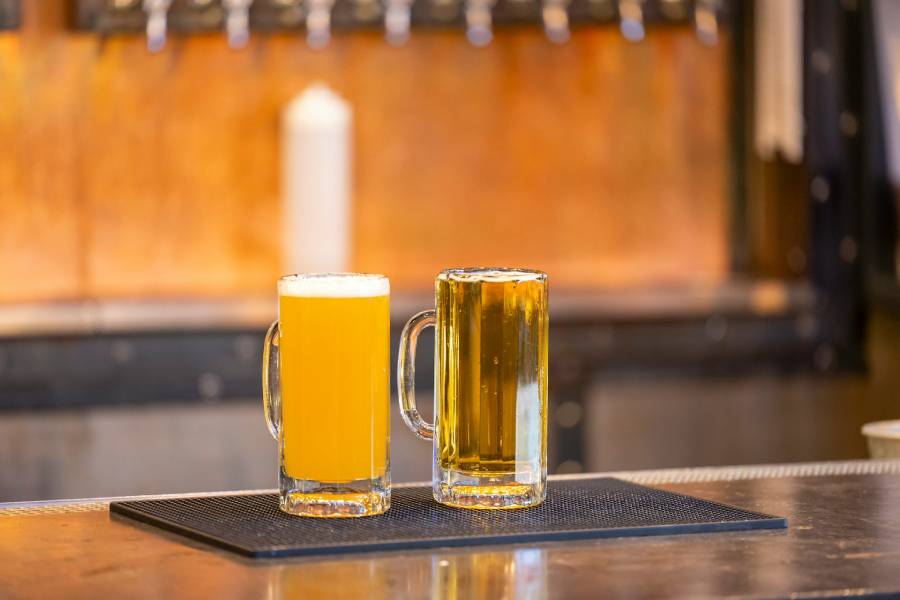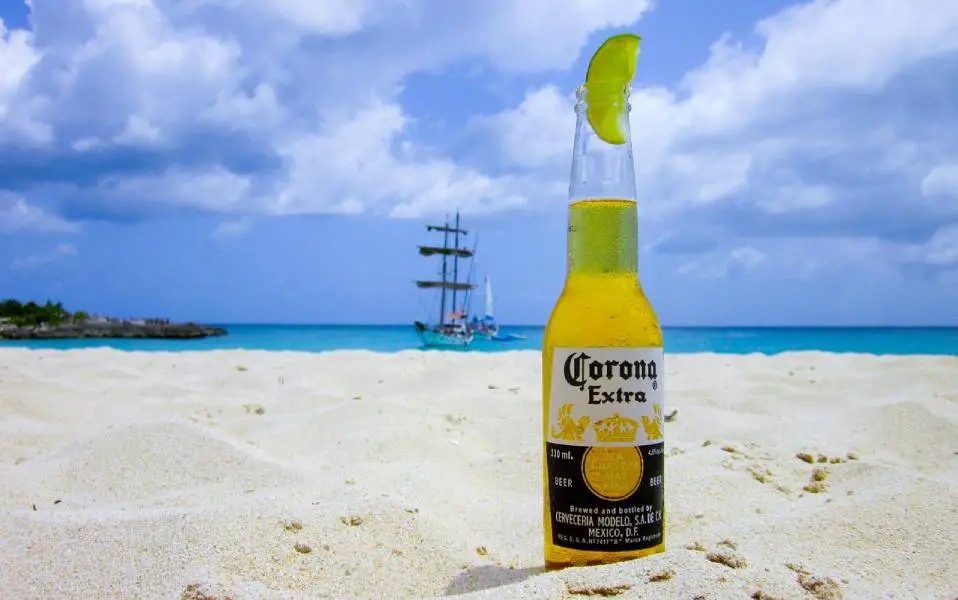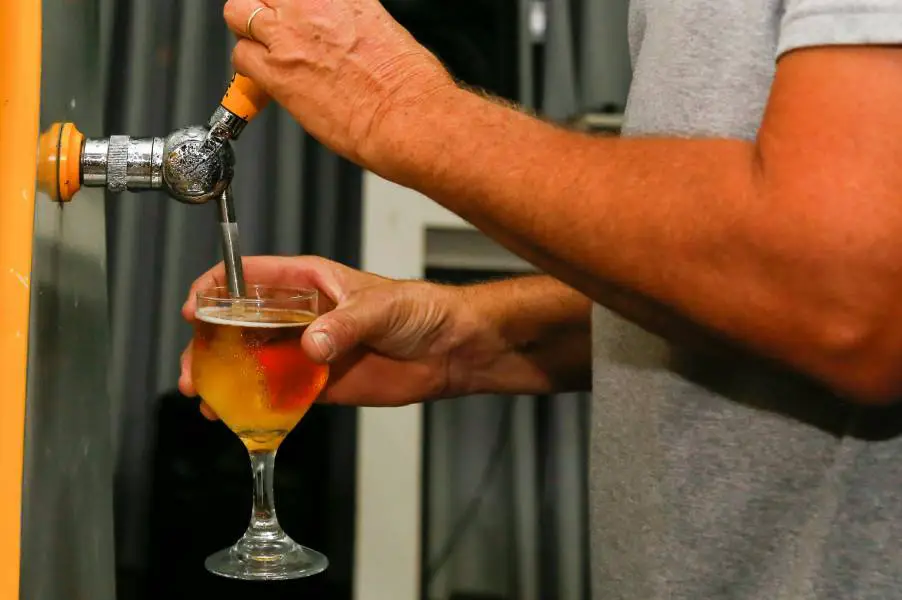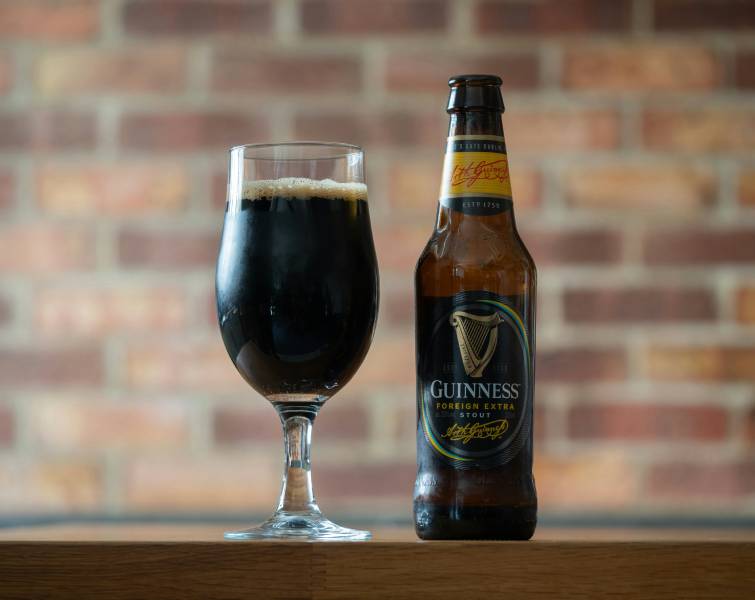When exploring options for home draft systems, choosing the right setup can make all the difference. Whether you’re an avid homebrewer or a casual beer lover, finding the best solution is key. The keezer vs kegerator debate continues to grow in popularity. It’s a decision that impacts your overall beer experience.
Keezer Vs Kegerator Overview
Keezer and kegerator are two famous pieces of equipment for keeping beer cold and fresh. Both are popular among homebrewers and beer enthusiasts looking for a convenient way to serve draft beer. While they share the same purpose, their designs and functions differ. These differences impact how they fit into various spaces.
When considering a keezer or a kegerator, it’s important to think about personal preferences and usage habits. Each option caters to specific needs, whether you prioritize capacity or ease of use. The keezer vs kegerator debate often comes down to flexibility versus convenience. Both serve beer lovers in different ways.
What Is a Keezer?
A keezer is a freezer that has been modified to serve draft beer. It’s typically created by adding a temperature controller to a chest freezer, which allows it to maintain a more beer-friendly temperature. A collar is often installed for taps, making it easy to dispense beer without opening the lid. This setup gives homebrewers flexibility in customizing their system.
The primary use of a keezer is to store and serve kegs of beer at the right temperature. It’s popular among homebrewers and beer enthusiasts who want more storage space than a traditional kegerator provides. With multiple kegs inside, it allows for serving different types of beer on tap.
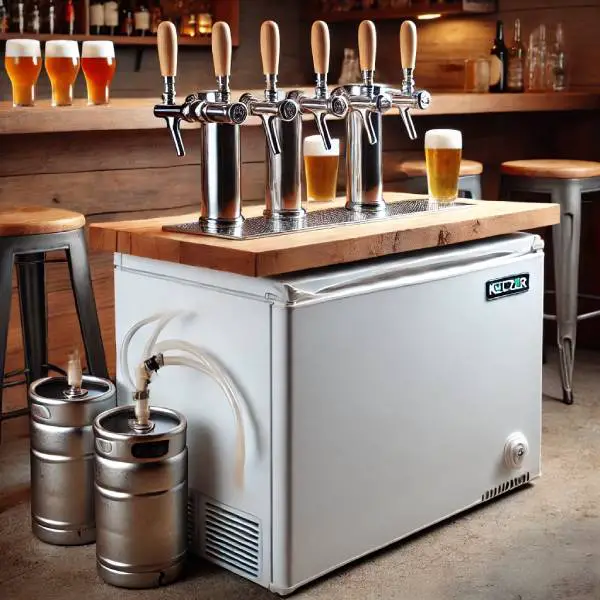
A keezer works by using the freezer’s cooling power (adjusted by a temperature controller) to keep beer cold without freezing. The collar, where taps are installed, allows for easy dispensing. Inside, the kegs are connected to CO2 tanks, which push the beer through the lines to the taps. It’s a simple but effective system for serving draft beer at home.
Pros of a Keezer
- Keezers are spacious and can hold more kegs compared to a kegerator. This makes it ideal for a commercial setting.
- Keezers are cost-effective as far as electricity is concerned. They use less electricity compared to other equipment that helps keep beer cold.
- Their big size can accommodate larger kegs.
- Keezers are customizable and can be designed to fit specific needs.
Cons of a Keezer
- It requires more space than a kegerator, which can be a drawback for those with limited space.
- Lifting and moving kegs may require more effort, especially when the keezer is full.
- Any slight mistake in the building process may result in additional costs for repairing and purchasing other new parts.
What Is a Kegerator?
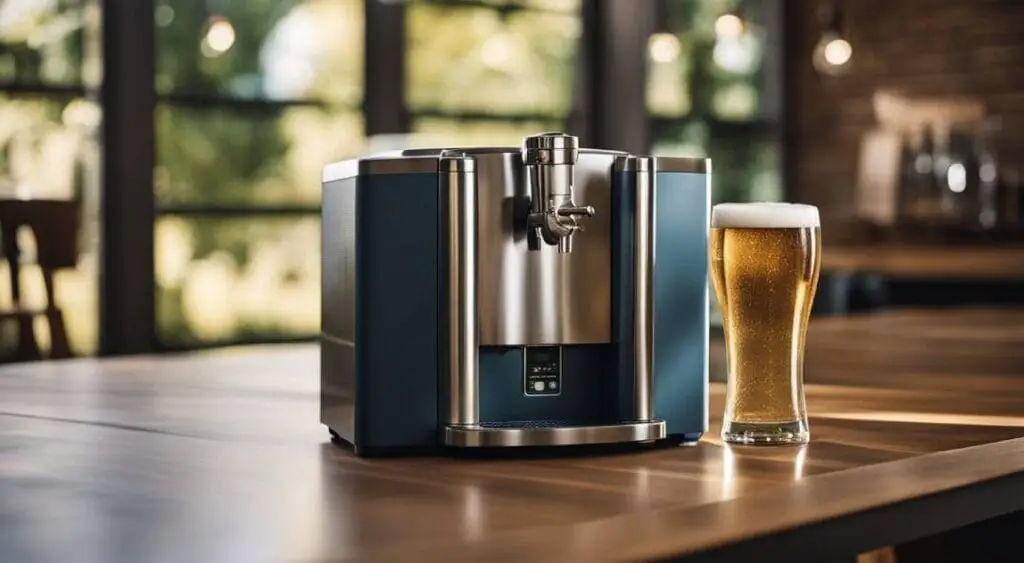
Kegerator comes from the words “keg” and “refrigerator.” When the words are put together, they form a kegerator. Therefore, a kegerator is essentially a refrigerator that has been modified to store and dispense beer and other beverages. The stored beer is kept at the proper temperature, typically between 34-40 degrees Fahrenheit.
The device contains components that work together to create a system that can store and dispense beer at an ideal temperature. For instance, it has a CO2 tank that pressurizes the keg and forces beer out of the tap. The CO2 also keeps beer fresh and carbonated until the keg is empty.
The kegerator also contains a beer tower that sits on top of the unit and dispenses beer. The equipement typically has faucets that allow you to pour beer into a glass. Its tower is cooled by a refrigeration system, which helps to keep beer cold as it flows through the system. A keg is connected to a tap on the outside of the kegerator, allowing the user to pour beer directly into a glass.
Pros of a Kegerator
- A kegerator is environmentally friendly as it helps curb the spread of waste that comes from packaging.
- It is easy to assemble. All you need is to buy the components and start the installation process.
- Convenient and easy to use, there is no need to constantly restock the fridge with beer.
- It can be customized to fit the style and decor of your home or bar area.
Cons of a Kegerator
- Kegerators require regular maintenance to keep the beer lines clean and prevent bacteria growth. This can be time-consuming and expensive.
- If the kegerator is not correctly calibrated, the beer can be over-carbonated or under-carbonated, affecting the taste and quality of the beer.
- It can be costly since it uses electricity to operate.

Comparison Between a Keezer and a Kegerator
Now that you better understand a keezer and a kegerator, it is vital to understand the differences and similarities. This way, you will be able to make a decision and choose one that suits your need. Here are the similarities and differences:
Similarities
- Both are used for storing and dispensing draft beer.
- Both require a CO2 tank and regulator to maintain proper carbonation and dispensing pressure.
- Both can be customized to accommodate different keg sizes and a number of taps.
- Both require periodic cleaning and maintenance to ensure the quality of the beer and the longevity of the equipment.
- Both can be DIY projects or purchased pre-made from retailers.
- Both are powered to operate. You either have electricity, a generator, or solar system to ensure your beer remains chilled and fresh.
- Both require temperature control to keep the beer chilled.
- Both can be used for dispensing other beverages, such as cider or wine, with the appropriate equipment.
Differences
- A kegerator is generally more mobile than a keezer, as it’s usually on wheels and can be moved around more easily. A keezer is usually a more permanent fixture in a home or garage.
- A keezer usually has better temperature control than a kegerator, as it’s easier to adjust the temperature of a chest freezer. Kegerators can sometimes struggle to maintain a consistent temperature.
- A keezer can usually hold more kegs than a kegerator, as you can stack kegs on top of each other in a chest freezer. Kegerators usually have a limited capacity.
- With a keezer, you have more options for customization, such as the size and number of kegs you can fit. Kegerators are generally more limited in terms of customization.
- A keezer is generally cheaper to build than a kegerator, especially if fancy DIY projects. However, a kegerator may be cheaper if you buy a pre-made unit.
- Kegerators are smaller and are ideal for personal use, unlike keezers that can hold a large amount of beer. It means keezers are better used when holding a party or operating a bar.
The Major Distinguishing Factor
The main difference between a keezer and a kegerator is their design and storage capacity. A keezer is a modified chest freezer with more space for multiple kegs, while a kegerator is a purpose-built refrigerator for serving beer. Keezers offer more customization, while kegerators are more compact and ready to use.

When to Use a Keezer
The best time to use a keezer is when you want to store and serve multiple kegs of beer at once. It’s ideal for homebrewers who need extra space for different types of beer. A keezer is also great for events where you’re serving larger groups.
When to Use a Kegerator
The best time to use a kegerator is when you want a simple, compact setup for serving draft beer. It’s perfect for smaller spaces like kitchens or home bars. A kegerator works well for single-keg systems and casual use. It’s also great for enjoying fresh beer without much hassle.
Which Is Better Keezer vs Kegerator?
The better option between the two is definitely a keezer. This is because a keezer can hold more kegs than a kegerator. You can stack kegs on top of each other in a chest freezer. This stacking makes it possible to hold more kegs. Keezers are also cost-effective since they use less electricity compared to kegerators.
Frequently Asked Questions
How Long Does Beer Last in a Kegerator?
A pasteurized beer will last for up to six months in a kegerator. An unpasteurized beer should be consumed within 2-3 months. However, the duration may also depend on the beer style and condition of a kegerator. It’s essential to regularly clean and maintain your kegerator to ensure the quality and freshness of your beer.
What Is the Best Temperature for Beer Kegs?
The best temperature for keeping the keg is 38 degrees Fahrenheit. Keeping a keg at higher temperatures can cause the beer to become foamy and lose its flavor. On the other hand, a lower temperature can cause it to freeze.
How Many Kegs Are in a Keezer?
A keezer can hold as many as five standard kegs when stuck on each other. That is why keezers are more convenient than kegerators because they offer more room. However, the number of kegs it will hold depends on the freezer size and your kegs.
Conclusion
Kegerators and keezers are excellent equipment that helps store and dispense beer at home or any joint. Both have temperature controls to help keep beer chilled and fresh. They are also flexible and can be used to dispense other beverages, such as cider and wine. Always remember to drink responsibly.


